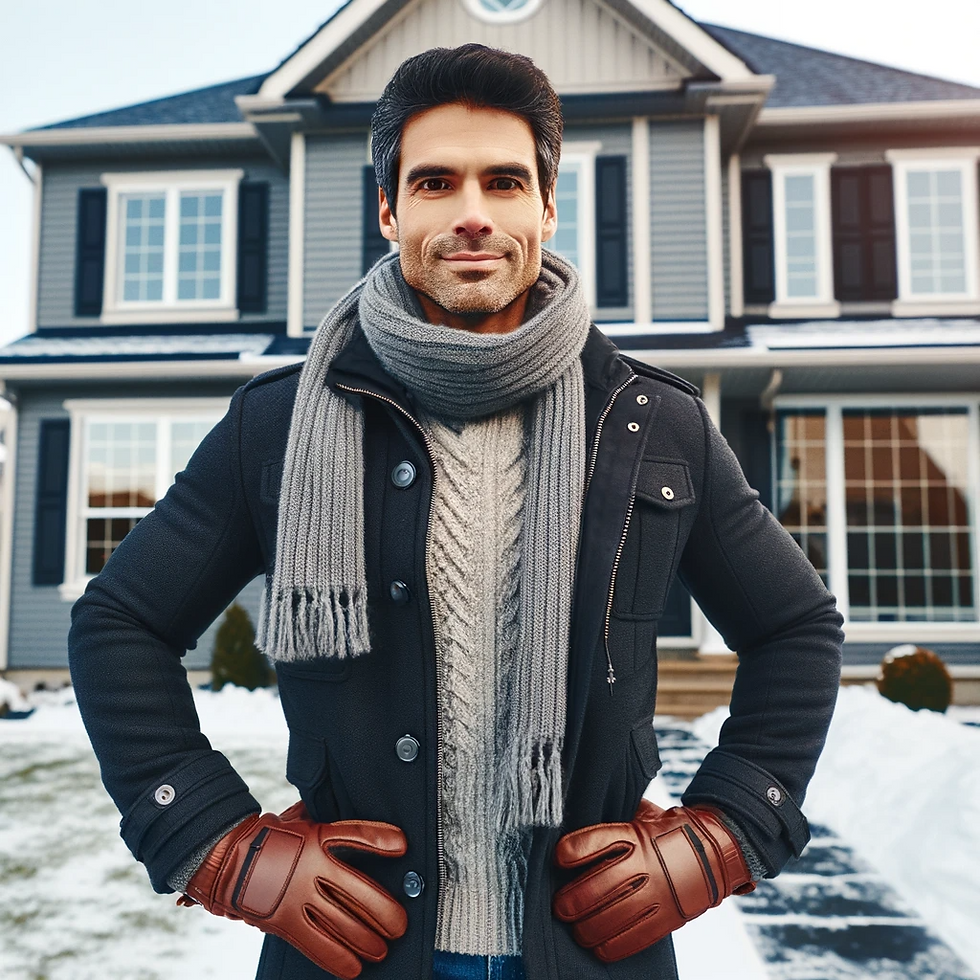Essential Winterization Tips for Homeowners: Your Complete Guide
- hillstophomeinspec
- Dec 22, 2023
- 2 min read
As the winter season approaches, it's essential for homeowners to prepare their homes for the cold months ahead. Proper winterization can help keep your home warm, comfortable, and energy-efficient while preventing costly damage. In this comprehensive guide, we'll walk you through essential winterization tips recommended by home inspectors to ensure your home is ready to weather the winter chill.

Check and Insulate Windows and Doors:
Begin by inspecting all windows and doors for drafts, gaps, or cracks.
Seal any leaks using weatherstripping or caulking to prevent heat loss.
Consider installing storm windows and doors for added insulation and protection.
Insulate Attic and Walls:
Proper insulation in your attic and walls is crucial for keeping your home warm.
Verify that your insulation is correctly installed and add or replace it as needed.
Service Heating Systems:
Schedule a professional HVAC technician to inspect and service your heating system before the winter season.
Regularly replace or clean furnace filters to ensure efficient operation.
Seal Ducts:
Check for leaks in your heating system's ducts and seal them with appropriate insulation materials.
Programmable Thermostat:
Install a programmable thermostat to regulate temperature settings and save on energy costs.
Check Fireplace and Chimney:
Prioritize safety by having a chimney sweep inspect and clean your fireplace and chimney.
Keep the fireplace damper closed when not in use to prevent heat loss.
Insulate Pipes:
Prevent frozen and burst pipes by insulating exposed pipes, especially in unheated areas.
Consider using pipe insulation or heat tape to keep water flowing smoothly.
Check Roof and Gutters:
Inspect the roof for damaged shingles or potential leaks, addressing any issues promptly.
Clean gutters and downspouts to prevent ice dams and ensure proper drainage.
Outdoor Faucets and Hoses:
Disconnect and drain outdoor hoses to prevent freezing and potential pipe damage.
Install frost-free outdoor faucets or faucet covers for added protection.
Seal Cracks and Gaps:
Thoroughly examine your home's exterior for cracks, gaps, and holes, and seal them using caulk or foam insulation.
Inspect Insulation in Crawl Spaces and Basements:
Ensure that crawl spaces and basements are well-insulated and adequately ventilated to prevent cold air infiltration.
Check Smoke and Carbon Monoxide Detectors:
Test and replace batteries in smoke and carbon monoxide detectors to ensure they're functioning correctly.
Reverse Ceiling Fans:
Improve heating efficiency by reversing the direction of ceiling fans to push warm air down into the room.
Trim Trees and Remove Dead Branches:
Trim tree branches that might pose a risk during heavy snow or ice storms, preventing potential damage to your home.
Prepare an Emergency Kit:
Assemble an emergency kit containing essential items like flashlights, batteries, blankets, and non-perishable food items for power outages.
Winterize Your Lawn and Garden:
Get your garden and lawn equipment ready for winter storage, including draining fuel from lawnmowers and other machinery.
By following these expert-recommended winterization tips, homeowners can safeguard their homes, save on energy bills, and ensure a warm and cozy winter season. Don't wait until the first frost; start preparing your home today to enjoy a worry-free winter.





Comments